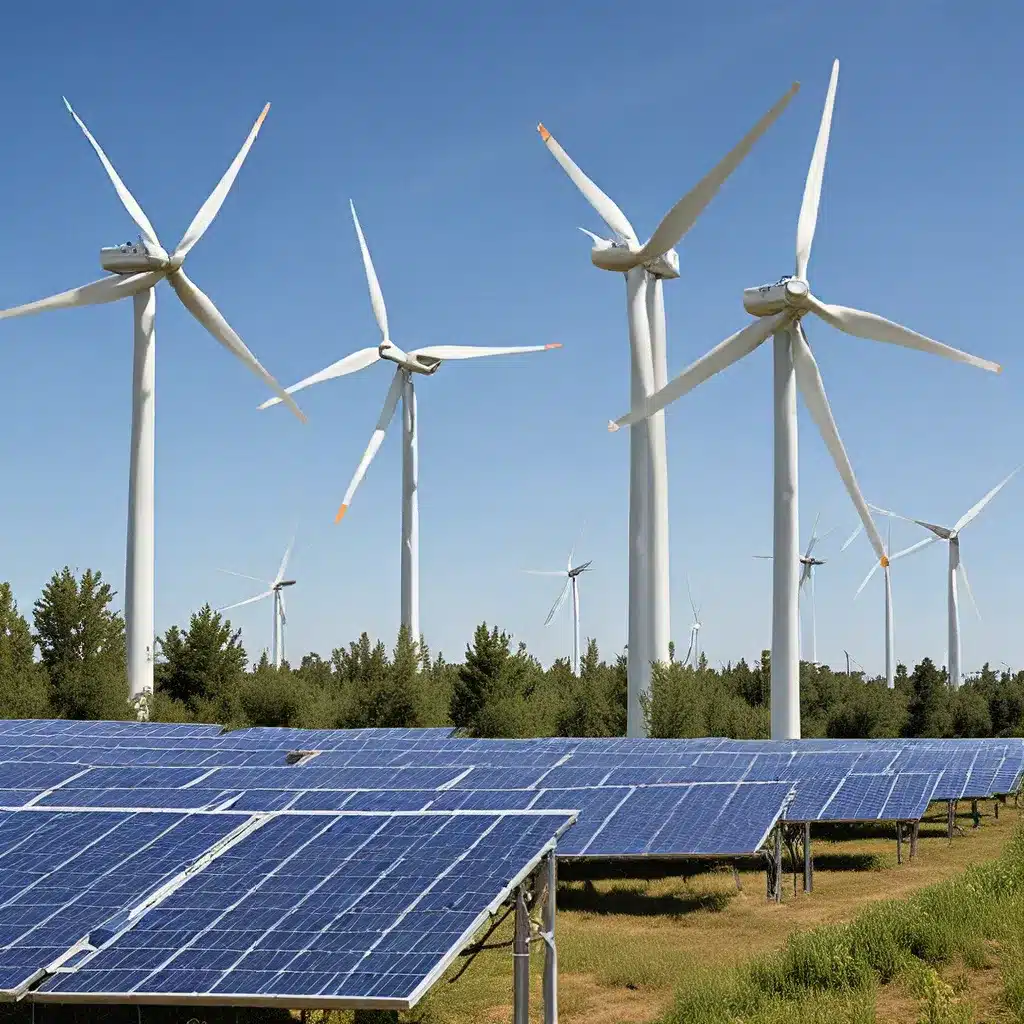
As someone deeply passionate about renewable energy and community development, I’ve been captivated by the incredible potential for these two domains to work in perfect harmony. It’s an area that’s been gaining increasing attention, and for good reason – the synergies between renewable energy solutions and thriving local communities are undeniable.
Powering Progress: Renewable Energy’s Role in Community Upliftment
Let me start by sharing a personal anecdote that really encapsulates this connection. A few years back, I had the opportunity to visit a small, off-the-grid village in rural Africa that had recently gained access to reliable, affordable solar power. The transformation I witnessed was nothing short of remarkable.
Suddenly, families had light to read and study by in the evenings, small businesses could stay open later, and the local clinic could keep its essential medical equipment running. The economic ripple effects were immediate – new jobs emerged, incomes rose, and a palpable sense of optimism and empowerment swept through the community. It was a prime example of how renewable energy can be a catalyst for holistic, sustainable development.
This experience underscores the powerful synergies between renewable energy and community upliftment. By providing clean, reliable, and accessible power, renewable energy solutions can unlock a host of social, economic, and environmental benefits for local communities. From improved livelihoods to enhanced education and healthcare, the downstream impacts are truly transformative.
Renewable Energy: Bridging the Development Divide
One of the most significant ways renewable energy can drive community development is by bridging the staggering energy access gap that persists in many parts of the world. According to the latest data, an estimated 759 million people globally still lack access to electricity, with the majority living in sub-Saharan Africa and developing Asia.
This lack of energy access is a major obstacle to economic and social progress, perpetuating a vicious cycle of poverty and underdevelopment. But renewable energy solutions, particularly distributed models like solar home systems and micro-grids, are proving to be game-changers in these underserved regions.
By providing affordable, reliable, and clean energy, renewable projects are empowering local communities to break free from this development divide. Access to electricity unlocks a world of possibilities – from supporting small businesses and powering essential services to enabling access to digital technologies and improving overall quality of life.
Renewable Energy and Community Ownership: A Powerful Combination
But the synergies between renewable energy and community development go far beyond just energy access. When local communities have a direct stake in renewable energy projects, the benefits become even more profound and sustainable.
Community ownership models, where residents participate in the planning, implementation, and management of renewable energy systems, have been gaining traction around the world. These models not only ensure that the economic and social dividends of renewable energy stay within the community, but they also foster a deep sense of pride, empowerment, and long-term commitment to the project’s success.
Take the example of a small rural town in India that came together to develop a community-owned solar micro-grid. The project not only provided reliable electricity to households and businesses, but it also created local jobs, generated income for the community, and strengthened social cohesion. The residents took ownership of the project, ensuring its long-term viability and sustainability.
This kind of community-centric approach to renewable energy is a powerful model for driving sustainable development. When local stakeholders are actively involved, the benefits extend far beyond just energy access, permeating into all aspects of community life.
Renewable Energy and Sustainable Community Design
But the synergies between renewable energy and community development don’t stop there. As we look towards the future, the integration of renewable energy systems into the very fabric of sustainable community design is becoming increasingly crucial.
Imagine neighborhoods where rooftop solar panels, community-scale wind turbines, and energy storage solutions are seamlessly woven into the built environment. This kind of renewable-powered community design can unlock a myriad of benefits – from reducing energy costs and carbon emissions to fostering a greater sense of environmental stewardship among residents.
And the potential for these sustainable communities extends beyond just energy. By incorporating principles of urban planning, green infrastructure, and participatory decision-making, these communities can become models of holistic, resilient development that prioritize the well-being of both people and the planet.
Unleashing the Power of Collaboration
Of course, realizing the full potential of renewable energy and community development synergies will require the coordinated efforts of a diverse range of stakeholders. From policymakers and renewable energy developers to community leaders and social entrepreneurs, everyone has a crucial role to play.
Innovative financing mechanisms, such as blended finance models and community investment funds, will be essential to unlock the resources needed to scale these transformative initiatives. And cross-sector collaboration will be key, as organizations with complementary expertise come together to tackle the multifaceted challenges of sustainable development.
The Breakthrough Alliance, for instance, is a powerful example of this kind of collaborative approach. By bringing together the United Nations, private investors, and community-based organizations, the alliance is driving innovative solutions that leverage the synergies between digital transformation and decarbonization.
As I reflect on the incredible potential of renewable energy and community development, I can’t help but feel a deep sense of optimism and excitement. The possibilities are endless, and the opportunities to create a more sustainable, equitable, and vibrant future are within our grasp.
Of course, there will be challenges and complexities along the way. Navigating the nuances of community engagement, overcoming technological barriers, and addressing systemic inequities will require patience, creativity, and a relentless commitment to learning and adaptation. But I believe that by embracing the power of collaboration and staying true to the core values of sustainability and social impact, we can unlock a brighter, more prosperous future for all.
So, my friends, let’s embark on this journey together. Let’s harness the transformative potential of renewable energy and community development, and let’s do it in a way that inspires hope, fosters resilience, and leaves a lasting, positive legacy for generations to come.

